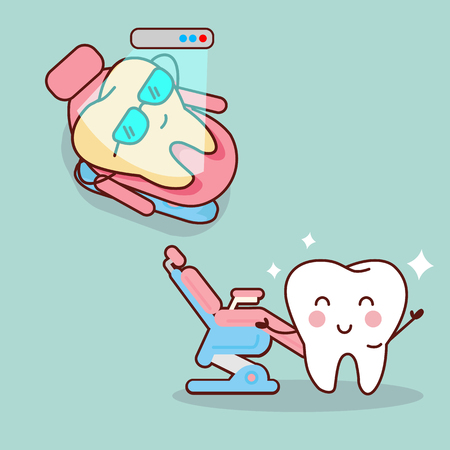Introduction to Cosmetic Bonding and Dental Crowns
If you’re looking to improve your smile, cosmetic dentistry offers several solutions—two of the most popular being cosmetic bonding and dental crowns. Each treatment has its own unique process, benefits, and ideal applications. Understanding these options is essential when considering both the aesthetic results and overall costs.
Cosmetic bonding is a minimally invasive procedure where a tooth-colored resin material is applied directly to your teeth. This resin is shaped, hardened with a special light, and polished to blend seamlessly with your natural teeth. It’s often used for fixing minor chips, gaps, discoloration, or irregular shapes. The procedure typically requires little or no removal of your existing tooth structure and can usually be completed in just one office visit.
Dental crowns, on the other hand, are custom-made caps that completely cover a damaged or weakened tooth. Crowns are crafted from materials such as porcelain, ceramic, or metal alloys and are designed to restore both function and appearance. Getting a crown usually involves reshaping the original tooth, taking impressions, and fitting a temporary crown while the permanent one is fabricated in a dental lab—a process that generally takes two visits.
The main purpose of both cosmetic bonding and dental crowns is to enhance your smile by improving the shape, color, and strength of your teeth. However, they differ significantly in terms of procedure complexity, durability, cost, and suitability depending on your dental needs. To help clarify these differences at a glance, take a look at the table below:
| Treatment | Main Purpose | Procedure Time | Tooth Preservation |
|---|---|---|---|
| Cosmetic Bonding | Minor repairs & enhancements | Usually 1 visit | Minimal enamel removal |
| Dental Crown | Restoring damaged/weak teeth | Usually 2 visits | More enamel removal required |
This overview sets the stage for comparing the affordability of cosmetic bonding versus dental crowns—an important factor for many Americans seeking cost-effective yet reliable ways to achieve their ideal smile.
2. How Cosmetic Bonding Works
Cosmetic bonding is a popular and cost-effective dental procedure used to improve the appearance of teeth. It involves applying a tooth-colored resin material to the surface of a tooth, then shaping and polishing it to blend seamlessly with the surrounding teeth. This procedure is minimally invasive, making it an attractive option for many patients who want quick and affordable cosmetic enhancements.
The Process of Cosmetic Bonding
The process typically begins with your dentist selecting a shade of composite resin that closely matches your natural tooth color. Next, the surface of the tooth is slightly roughened, and a conditioning liquid is applied to help the bonding material adhere. The resin is then molded and shaped before being hardened with a special curing light. Finally, the bonded tooth is trimmed, shaped, and polished for a natural look.
Materials Used in Cosmetic Bonding
Cosmetic bonding uses composite resin, which is a durable plastic material designed to mimic the appearance of natural teeth. This material can be easily manipulated during application and provides strong adhesion when bonded properly.
Pros and Cons of Cosmetic Bonding
| Pros | Cons |
|---|---|
| Quick and painless procedure | Less durable than crowns or veneers |
| No need for anesthesia in most cases | May stain over time like natural teeth |
| Minimal removal of natural tooth structure | Can chip or break under pressure |
| More affordable than crowns or veneers | Might require touch-ups or replacements sooner |
Typical Scenarios Where Bonding Is Recommended
Cosmetic bonding is often recommended for minor cosmetic issues such as:
- Repairing chipped or cracked teeth
- Closing small gaps between teeth (diastema)
- Improving the appearance of discolored teeth that do not respond well to whitening treatments
- Changing the shape or length of teeth for a more uniform smile
- Protecting exposed tooth roots caused by gum recession
This versatility makes cosmetic bonding an appealing choice for patients looking for a simple, fast, and budget-friendly way to enhance their smile without undergoing extensive dental work.
![]()
3. Understanding Dental Crowns
Dental crowns are a popular restorative and cosmetic option for people looking to repair or enhance the appearance of damaged teeth. A crown is essentially a custom-made “cap” that fits over your existing tooth to restore its shape, size, and function while protecting it from further damage. Here’s a closer look at what dental crowns involve and why many patients in the U.S. choose them.
Materials Used for Dental Crowns
| Material | Appearance | Durability | Common Uses |
|---|---|---|---|
| Porcelain/Ceramic | Natural tooth-like color | Moderate to High | Front teeth for aesthetics |
| Porcelain-fused-to-metal (PFM) | Tooth-colored with metal base | High | Front or back teeth, good balance of strength and looks |
| Gold alloys | Metallic gold/yellow hue | Very High | Back teeth where strength is critical |
| Zirconia | White, can be shaded to match teeth | Very High | Back or front teeth, excellent durability and aesthetics |
The Dental Crown Procedure: Step-by-Step
- Consultation: Your dentist evaluates your tooth and discusses the best crown material for your needs.
- Preparation: The tooth is reshaped to make room for the crown. Sometimes, old fillings or decay are removed at this stage.
- Impression: A digital scan or physical mold is taken of your prepared tooth to create a custom crown.
- Temporary Crown: While your permanent crown is made (usually 1-2 weeks), you’ll wear a temporary crown to protect the tooth.
- Crown Placement: The final crown is checked for fit and color before being cemented onto your tooth.
Main Benefits of Dental Crowns
- Strengthens Weak Teeth: Especially after root canals or large cavities.
- Aesthetic Improvement: Covers discolored, misshapen, or chipped teeth for a natural look.
- Long-lasting Solution: With proper care, crowns can last 10-15 years or more.
- Makes Chewing Comfortable Again: Restores normal bite function.
Limitations and Considerations
- Permanence: The procedure involves removing some healthy enamel, making it irreversible.
- Sensitivity: Some patients experience temporary sensitivity after placement.
- Cost: Crowns tend to be more expensive than cosmetic bonding, especially with premium materials like zirconia or gold.
- Lifespan: Crowns can still chip or become loose over time, requiring replacement or repair.
Common Reasons Americans Choose Dental Crowns
- Savings in the Long Run: Their durability often means fewer replacements compared to bonding.
- Covers Extensive Damage: Ideal when bonding isn’t enough due to significant cracks, decay, or after root canal therapy.
- Crowns for Cosmetic Upgrades: Many opt for crowns as part of a smile makeover to achieve lasting aesthetic results.
- Dentist Recommendation: Dentists often suggest crowns when structural integrity is a concern—not just appearance.
4. Comparing Costs: Bonding vs. Crowns
When deciding between cosmetic bonding and dental crowns, cost is often a major factor for many Americans. The total expense includes not only the initial treatment but also insurance coverage and potential long-term costs. Here’s a detailed comparison to help you make an informed choice:
Average Initial Investment
| Treatment Type | Average Cost per Tooth (USD) | Typical Insurance Coverage |
|---|---|---|
| Cosmetic Bonding | $300 – $600 | Rarely covered (cosmetic procedure) |
| Dental Crowns | $800 – $1,700 | Partially covered (if medically necessary) |
Insurance Considerations
Most dental insurance plans in the U.S. consider cosmetic bonding an elective procedure, so coverage is limited or nonexistent unless it addresses structural damage. Dental crowns, however, may be partially covered if they are deemed necessary for tooth strength or health, rather than strictly for appearance. Its important to check with your provider for specifics on deductibles, annual maximums, and out-of-pocket expenses.
Long-Term Expenses and Durability
| Treatment Type | Expected Lifespan | Maintenance/Replacement Costs | Total Potential 10-Year Cost* |
|---|---|---|---|
| Cosmetic Bonding | 3-7 years | $300 – $600 (per replacement) | $900 – $1,800+ |
| Dental Crowns | 10-15 years (sometimes longer) | $800 – $1,700 (per replacement) | $800 – $1,700+ |
*Assumes one replacement for bonding and none or one for crowns within ten years.
While bonding has a lower upfront cost, its shorter lifespan means you may pay more over time due to maintenance or replacements. Crowns have a higher initial investment but are more durable and could be more cost-effective in the long run.
Durability and Longevity
When deciding between cosmetic bonding and dental crowns, understanding the durability and expected lifespan of each treatment is crucial for making a cost-effective choice. Both options restore the appearance and function of teeth, but they differ significantly in terms of longevity, maintenance, and resilience.
Expected Lifespan
| Treatment | Average Lifespan |
|---|---|
| Cosmetic Bonding | 3-7 years |
| Dental Crowns | 10-15 years (sometimes longer with proper care) |
Dental crowns generally last much longer than cosmetic bonding. Crowns are made from durable materials such as porcelain or metal alloys, while bonding relies on resin that is more susceptible to chipping and staining over time.
Maintenance Requirements
Both treatments require good oral hygiene practices, but their maintenance needs differ:
- Cosmetic Bonding: Requires more frequent touch-ups or replacements due to staining or wear. Patients should avoid biting into hard foods and minimize exposure to staining agents like coffee or tobacco.
- Dental Crowns: Require regular brushing and flossing, but are less prone to everyday damage. Occasional crown replacement may be needed if there is gum recession or underlying tooth decay.
Factors Influencing Durability
- Bite Force: Individuals who grind their teeth or have strong bite forces may experience quicker wear on bonded teeth compared to crowns.
- Location: Teeth at the front (anterior) are exposed to less pressure than molars; thus, bonding may last longer on front teeth, while crowns are better suited for back teeth where chewing force is greater.
- Lifestyle Habits: Diet, oral hygiene, and habits like nail-biting or opening packages with teeth can affect both treatments’ longevity.
- Material Quality: Higher-quality materials improve durability for both options but especially impact the lifespan of dental crowns.
Conclusion: Durability vs. Affordability
If you’re looking for a solution that lasts longer with less frequent replacement, dental crowns offer greater durability—though at a higher initial cost. Cosmetic bonding remains an affordable short-term fix but will likely require additional investment in maintenance or replacement over time. Consider your personal habits and long-term goals when weighing which treatment is best for your needs.
6. Which Option is Right for You?
Deciding between cosmetic bonding and dental crowns comes down to your unique dental needs, budget, aesthetic goals, and lifestyle. Both treatments have their own strengths, so understanding these factors can help you make the best choice for your smile and wallet. Below is a comparison table to help you evaluate which option may be right for you:
| Consideration | Cosmetic Bonding | Dental Crowns |
|---|---|---|
| Cost | Generally more affordable; typically $100–$600 per tooth | Higher upfront cost; usually $800–$2,500 per tooth |
| Treatment Time | Often completed in one visit | Usually requires two or more appointments |
| Aesthetics | Good for minor imperfections; natural look but may stain over time | Highly aesthetic and durable; resists staining |
| Durability | Lasts 3–10 years with care; more prone to chipping | Lasts 10–15+ years; strong and long-lasting |
| Suitability | Best for small chips, gaps, or minor discoloration | Ideal for severely damaged, decayed, or weakened teeth |
Your Dental Needs
If you have minor cosmetic flaws—like small chips, slight gaps, or light discoloration—cosmetic bonding can be a quick and effective solution. However, if your tooth is significantly damaged or weakened, a crown might be necessary to restore function and protect the tooth long-term.
Your Budget
If affordability is your top priority and your dental issues are minor, bonding is usually the most cost-effective choice. For major restorations or when longevity is a concern, investing in a crown may save you money on future repairs.
Aesthetic Goals & Lifestyle Factors
If you want the most natural-looking, stain-resistant result—especially for front teeth that show when you smile—a porcelain crown may be worth the investment. If you tend to bite hard foods or grind your teeth (bruxism), crowns generally hold up better under pressure than bonding.
Consult Your Dentist
No matter which direction you’re leaning, it’s important to consult with a trusted dentist who understands your dental history and goals. They’ll assess your oral health and recommend the option that best fits both your needs and lifestyle.


